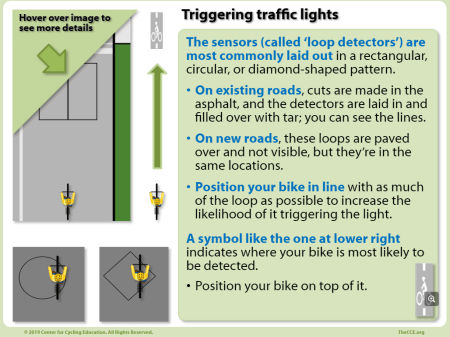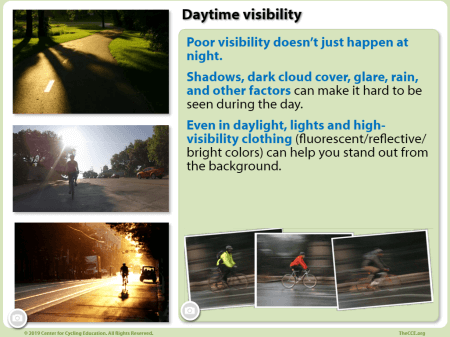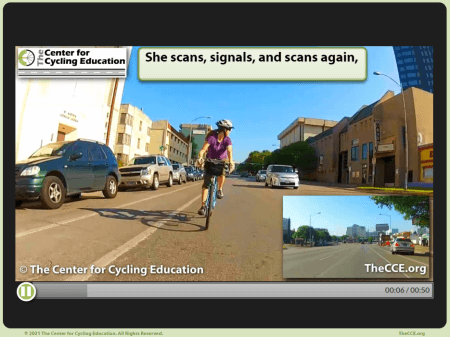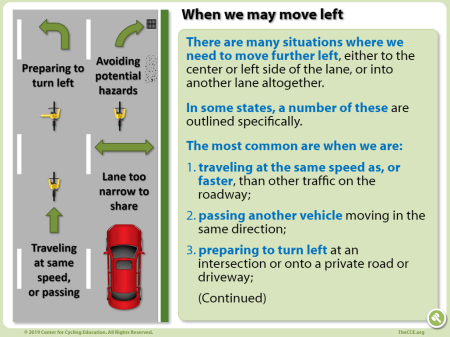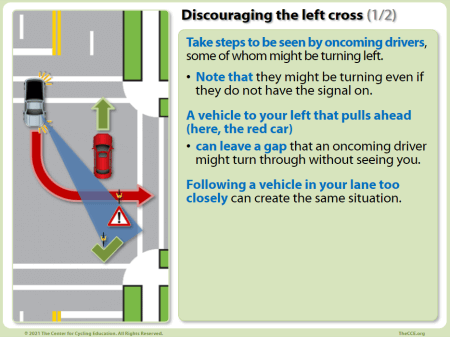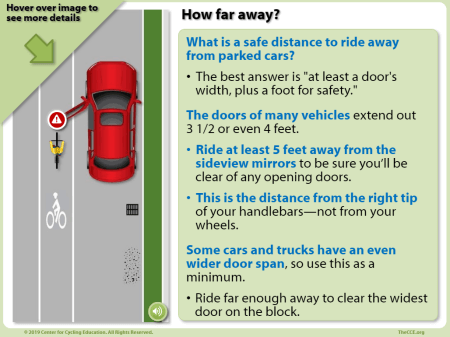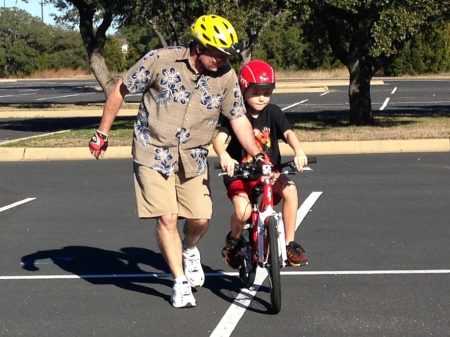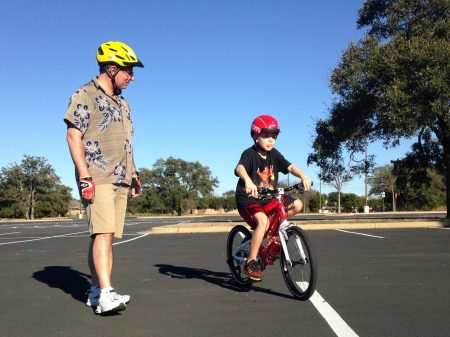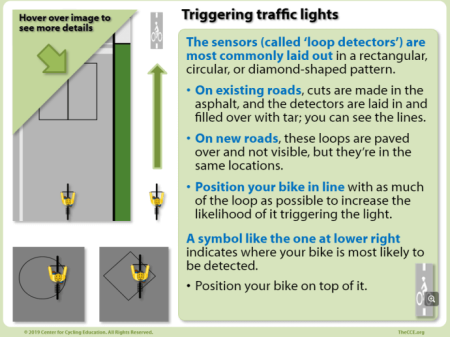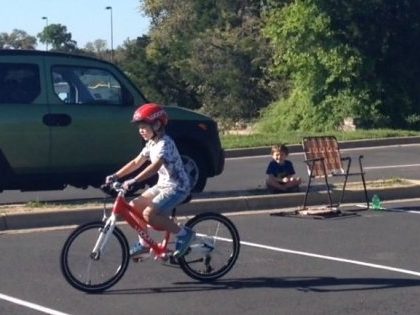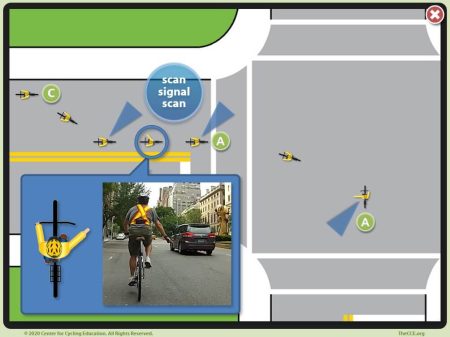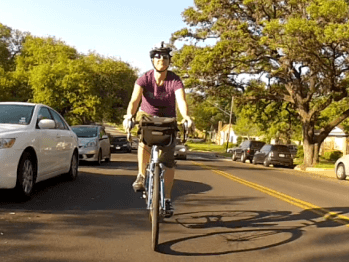Cycling regulations in Austin, Texas
There are no federal laws outlining the rules of the road. Instead, each state has its own set of traffic laws. In many cases, these are based at least in part on the Uniform Vehicle Code.
In addition to this, counties, cities, and towns may have their own traffic regulations, usually known as ordinances or codes.
There are often regulations in other jurisdictions, including college campuses and military bases.
These local regulations may not take away any rights listed in the state traffic laws, unless this option is expressly permitted by the state. They also may not permit a person riding a bike to do anything prohibited by state law.
See below for state laws and municipal regulations that apply to riding your bike in Austin.
USA » TX – Texas » Austin » Austin Code of Ordinances
City of Austin website: Bicycle and Micromobility Laws and Safety ![]()
(Retrieved from the municode website ![]() on September 19, 2019. This is not an official version.)
on September 19, 2019. This is not an official version.)
AUSTIN CODE OF ORDINANCES
Title 12. – Traffic Regulations.
Chapter 12-1. – Traffic Regulation and Administration.
Article 1. – Definitions and Applicability.
- § 12-1-1 – Definitions.
Article 3. – Traffic Restrictions.
- § 12-1-2 – Compliance Required.
- § 12-1-21 – Driving in Bicycle Lane.
- § 12-1-24 – Left Turn Restricted from Alley or Driveway.
- § 12-1-25 – Obstructing Intersection or Crosswalk.
- § 12-1-32 – Use of Micro-Mobility Devices, Skateboards, Bicycle Motocross Bicycles, and Toy Vehicles on Public Right-of-Way or Property.
- § 12-1-34 – Use of Portable Electronic Devices While Operating a Motor Vehicle, Bicycle, or Micro-Mobility Device.
- § 12-1-35 – Vulnerable Road users.
Chapter 12-2. – Micro-Mobility Devices and Bicycles.
Article 1. – General Provisions.
- § 12-2-1 – Definitions.
Article 2. – Micro-Mobility Device and Bicycle Traffic Regulations.
- § 12-2-11 – Applicability of Vehicle Traffic Rules.
- § 12-2-12 – Obedience to Traffic-Control Devices.
- § 12-2-13 – Use of Sidewalks.
- § 12-2-14 – Exiting from Alley, Driveway, or Building.
- § 12-2-15 – Parking.
- § 12-2-16 – Riding Restrictions.
- § 12-2-17 – Riding on Restricted or Prohibited Streets.
- § 12-2-18 – Rider Duties. (If causing injury to a person or damage to property)
Article 3. – Safety Equipment.
- § 12-2-31 – Helmet Required.
- § 12-2-32 – Approval of Standards.
- § 12-2-33 – Health Condition Exemption.
- § 12-2-34 – Multiple Riders Prohibited.
- § 12-2-36 – Penalty; Enforcement.
- § 12-2-37 – Civil Actions.
AUSTIN CODE OF ORDINANCES — TITLE 12. – TRAFFIC REGULATIONS.
CHAPTER 12-1. – TRAFFIC REGULATION AND ADMINISTRATION. 
ARTICLE 1. – DEFINITIONS AND APPLICABILITY. 
§ 12-1-1 – DEFINITIONS. 
In this title:
- ALLEY means a street of 20 feet or less in width, having no legal or official name other than alley.
- AMENITY means public furniture, utility, stairs, or architectural feature.
- ELECTRONIC MESSAGE means a self-contained piece of digital communication that is designed or intended to be transmitted between physical devices. An electronic message includes, but is not limited to, a text-based communication, a command or request to access an internet site, or other data that uses a commonly recognized electronic communications protocol.
- MICRO-MOBILITY DEVICE means a scooter, skateboard, or other compact device designed for personal micro-mobility, either privately-owned, or part of a shared micro-mobility service. It does not include “electric personal assistive mobility” devices under Texas Transportation Code Section 551.201, or medical devices.
- PARK OR PARKING means to stand an occupied or unoccupied vehicle, other than temporarily while loading or unloading merchandise or passengers.
- TRAFFIC ENGINEER means the person designated by the city manager to serve as the City’s traffic engineer.
- TRUCK means a motor vehicle or combination vehicle/trailer with a total of six or more wheels, designed, maintained, or used primarily for the transportation, loading, or unloading of material or property, including “special mobile equipment” as defined in Section 541.201 ( Vehicles ) of the Texas Transportation Code.
- WIRELESS COMMUNICATION DEVICE has the meaning assigned in Section 545.425 ( Use of Wireless Communication Device; Offense ) of the Texas Transportation Code.
§ 12-1-2 – COMPLIANCE REQUIRED. 
(A) A person who performs an act prohibited by this title or fails to perform an act required by this title commits an offense.
(B) Except as otherwise provided in this title, an offense under this title is a Class C misdemeanor punishable by a fine not to exceed $500.
ARTICLE 3. – TRAFFIC RESTRICTIONS. 
§ 12-1-21 – DRIVING IN BICYCLE LANE. 
(A) A person may not drive a motor-propelled vehicle in, on, or across a bicycle lane except:
(1) to enter or leave a driveway, building, or alley;
(2) to enter or leave a parking space; or
(3) for a bus, to enter or leave a bus stop.
(B) Subsection (A) does not apply to a bicycle, scooter, or other similar vehicle that is equipped with an electric motor that is capable of propelling the bicycle, scooter, or vehicle at a maximum speed of 20 miles per hour.
(C) A person may not drive on or cross a bicycle lane under this section without first yielding the right-of-way, if necessary, to avoid collision or interference with bicycle traffic.
§ 12-1-24 – LEFT TURN RESTRICTED FROM ALLEY OR DRIVEWAY. 
(A) Except as provided by Subsection (B), a person may not make a left turn in a vehicle to enter an alley, driveway, or building from a public street or to exit an alley, driveway, or building onto a public street.
(B) Subsection (A) does not apply to a person properly entering or leaving a one-way street or entering or leaving an area designated for left-turn storage and movement of vehicles.
§ 12-1-25 – OBSTRUCTING INTERSECTION OR CROSSWALK. 
A driver may not enter an intersection or a marked crosswalk unless there is sufficient space on the other side of the intersection or crosswalk to accommodate the driver’s vehicle without obstructing the passage of other vehicles or pedestrians, notwithstanding a traffic-control signal indication to proceed.
§ 12-1-32 – USE OF MICRO-MOBILITY DEVICES, SKATEBOARDS, BICYCLE MOTOCROSS BICYCLES, AND TOY VEHICLES ON PUBLIC RIGHT-OF-WAY OR PROPERTY. 
(A) A person may not use a toy vehicle on a public street except to cross a street at a crosswalk.
(B) A person may not operate a micro-mobility device, or ride a skateboard, toy vehicle, or similar device on public landscaping, amenities or art; or in a manner contrary to the intended use of any amenity.
§ 12-1-34 – USE OF PORTABLE ELECTRONIC DEVICES WHILE OPERATING A MOTOR VEHICLE, BICYCLE, OR MICRO-MOBILITY DEVICE. 
(A) In this section:
(1) portable electronic device means a hand-held mobile telephone, personal digital assistant, MP3 or other hand-held music player, electronic reading device, laptop computer, pager, broadband personal communication device, global positioning or navigation system, electronic game device, or portable computing device.
(2) use means employing a portable electronic device for any reason including, without limitation, the following activities while holding or touching the device:
(a) dialing or deactivating a phone call;
(b) speaking in or listening to a conversation;
(c) viewing, taking, or transmitting electronic images;
(d) composing, sending, viewing, accessing, browsing, retrieving, or saving email messages, text messages, or other electronic data;
(e) entering or changing information in a global positioning or navigation system or any software or application designed for navigation;
(f) accessing or viewing an internet website or computer application; or
(g) playing a game.
(3) operating a micro-mobility device or bicycle means riding while the micro-mobility device or bicycle is in motion.
(4) authorized emergency personnel means a person who is a law enforcement officer, firefighter, member of a governmental emergency medical services function, or member of a governmental emergency management function.
(B) An operator of a motor vehicle may not use a portable electronic device while the vehicle is in motion.
(C) A person may not use a portable electronic device while operating a micro-mobility device or bicycle.
(D) It is an affirmative defense to prosecution of an offense under this section if:
(1) the motor vehicle, micro-mobility device, or bicycle is at a complete stop;
(2) the portable electronic device is used in a hands-free mode of operation and used to engage in telephone communication or to listen to audio transmissions;
(3) the portable electronic device is a global positioning or navigation device, or global positioning or navigation software on a device, and the device is affixed to the motor vehicle, micro-mobility device, or bicycle;
(4) use of a portable electronic device is for obtaining emergency assistance to report a crime, traffic accident, medical emergency, or serious traffic hazard, or to prevent a crime about to be committed; or
(5) use of a portable electronic device is in the reasonable belief that a person’s life or safety is in immediate danger.
(E) This section does not apply to authorized emergency personnel who are using a portable electronic device while the personnel are acting in an official capacity.
(F) This section does not apply to an operator who is licensed by the Federal Communications Commission while operating a radio frequency device other than a portable electronic device or an operator using a two-way radio communication in a commercial vehicle.
(G) To the extent that this section conflicts with the Texas Transportation Code Section 545.424 ![]() , regarding the use of wireless communication devices while operating a motor vehicle by minors, or Texas Transportation Code Section 545.425
, regarding the use of wireless communication devices while operating a motor vehicle by minors, or Texas Transportation Code Section 545.425 ![]() , regarding the use of wireless communication devices in school crossing zones, this section does not apply.
, regarding the use of wireless communication devices in school crossing zones, this section does not apply.
§ 12-1-35 – VULNERABLE ROAD USERS. 
(A) In this section, a Vulnerable Road User means:
(1) a pedestrian, including a runner, physically disabled person, child, skater, highway construction and maintenance worker, tow truck operator, utility worker, other worker with legitimate business in or near the road or right-of-way, or stranded motorist or passenger;
(2) a person on horseback;
(3) a person operating equipment other than a motor vehicle, including, but not limited to, a bicycle, handcycle, horse-driven conveyance, or unprotected farm equipment;
(4) a person operating a motorcycle, moped, motor-driven cycle, or motor-assisted scooter; or
(5) a person operating a micro-mobility device or bicycle.
(B) An operator of a motor vehicle passing a vulnerable road user operating on a highway or street shall:
(1) vacate the lane in which the vulnerable road user is located if the highway has two or more marked lanes running in the same direction; or
(2) pass the vulnerable road user at a safe distance.
(C) For the purpose of Subsection (b)(2), when road conditions allow, safe distance is at least:
(1) three feet if the operator’s vehicle is a passenger car or light truck; or
(2) six feet if the operator’s vehicle is a truck, other than a light truck, or a commercial motor vehicle as defined by Texas Transportation Code Section 522.003.
(D) An operator of a motor vehicle that is making a left turn at an intersection, including an intersection with an alley or private road or driveway, shall yield the right-of-way to a vulnerable road user who is approaching from the opposite direction and is in the intersection, or is in such proximity to the intersection as to be an immediate hazard.
(E) An operator of a motor vehicle may not overtake a vulnerable road user traveling in the same direction and subsequently make a right-hand turn in front of the vulnerable road user unless the operator is safely clear of the vulnerable road user, taking into account the speed at which the vulnerable road user is traveling and the braking requirements of the motor vehicle making the right-hand turn.
(F) An operator of a motor vehicle may not maneuver the vehicle in a manner that:
(1) is intended to cause intimidation or harassment to a vulnerable road user; or
(2) threatens a vulnerable road user.
(G) An operator of a motor vehicle shall exercise due care to avoid colliding with any vulnerable road user on a roadway or in an intersection of roadways.
(H) It is an affirmative defense to prosecution under this section that at the time of the offense the vulnerable road user was acting in violation of the law.
CHAPTER 12-2. – MICRO-MOBILITY DEVICES AND BICYCLES. 
ARTICLE 1. – GENERAL PROVISIONS. 
§ 12-2-1 – DEFINITIONS. 
In this chapter:
(1) CHILD means a person younger than 18 years of age who has not been married or had the disabilities of minority removed for general purposes.
(2) DIRECTOR means the director of the Austin Transportation Department.
(3) BICYCLIST means a person operating a bicycle.
(4) PARENT means the natural or adoptive parent or court-appointed guardian or conservator of a child.
(5) RIDER means a person operating a bicycle or a micro-mobility device.
(6) SHARED MICRO-MOBILITY SERVICE means a publicly offered transportation service that enables a person to obtain short-term access to a micro-mobility device on an as-needed basis.
§ 12-2-2 – APPLICABILITY. 
This chapter applies when a rider operates a micro-mobility device or bicycle on a street or sidewalk.
ARTICLE 2. – MICRO-MOBILITY DEVICE AND BICYCLE TRAFFIC REGULATIONS. [1] 
Footnotes: — (1) — Editor’s note— Ord. No. 20190523-059 , Pt. 8, effective May 3, 2019, amended Chapter 12-2, Article 2 title to read as herein set out. Formerly, such title pertained to Bicycle Traffic Regulations.
§ 12-2-11 – APPLICABILITY OF VEHICLE TRAFFIC RULES. 
A rider shall comply with the requirements of this title imposed on a driver of a vehicle, to the extent that the requirements may be applied to operation of a micro-mobility device or bicycle.
§ 12-2-12 – OBEDIENCE TO TRAFFIC-CONTROL DEVICES. 
(A) A rider shall obey the instruction of official traffic signals, signs, and other traffic-control devices applicable to vehicles, unless otherwise directed by a police officer.
(B) Unless a bike lane is specifically designated otherwise, a rider travelling in a bike lane may not travel in the opposite direction of adjacent motor vehicles in the roadway.
(C) A rider shall obey traffic signs that prohibit a right, left, or “U” turn, except when the rider dismounts from the micro-mobility device or bicycle to make the turn. A rider who dismounts shall obey regulations applicable to pedestrians.
§ 12-2-13 – USE OF SIDEWALKS. 
(A) Except as provided in Subsections (B) and (C), a person may ride a micro-mobility device or bicycle on a sidewalk in a reasonable and prudent manner.
(B) Riders shall yield to pedestrians on sidewalks and in cross walks.
(C) Riders shall operate on sidewalks in a manner consistent with the Americans With Disabilities Act and that does not endanger or hinder the movement of persons with limited mobility or other sidewalk users.
§ 12-2-14 – EXITING FROM ALLEY, DRIVEWAY, OR BUILDING.> 
A rider exiting from an alley, driveway, or building shall yield the right-of-way to a pedestrian on a sidewalk or sidewalk area, or to a vehicle on a roadway.
§ 12-2-15 – PARKING. 
(A) A person shall not park a micro-mobility device or bicycle:
(1) in a manner that obstructs pedestrian or vehicle traffic;
(2) in a space designated as a vehicle parking place or between two designated vehicle parking places, unless otherwise marked;
(3) in a manner that obstructs transit stops, shelters, or platforms;
(4) on any part of an accessibility ramp for persons with disabilities, or in any manner that would restrict the movement of persons with disabilities;
(5) in designated and marked special use zones, including, but not limited to, commercial service zones, passenger loading zones, customer service zones and valet zones;
(6) in a manner that obstructs fire suppression appurtenances, building entryways, exits, or vehicular driveways;
(7) on or near railroad or light rail tracks or crossings;
(8) in a manner that obstructs street furniture that pedestrians access, including, but not limited to, benches and parking pay stations; or
(9) on any private property without the permission of the owner.
(B) A person shall not attach or secure a micro-mobility device or bicycle to public or private property in a manner that may damage, impair, or render the property unusable.
(C) A person shall park a micro-mobility device or bicycle:
(1) in designated spaces marked for such use;
(2) in a manner which does not obstruct a roadway, path, sidewalk, crosswalk, or other pedestrian-way;
(3) in a manner which does not obstruct building entrances, exits, fire exits, delivery areas, or alleyways;
(4) in a manner which does not obstruct travel and movement in violation of the Americans with Disabilities Act; or
(5) in a manner which does not trespass on or obstruct private property, unless authorized by owner.
§ 12-2-16 – RIDING RESTRICTIONS. 
(A) Except as otherwise directed by a traffic-control device or a police officer, a rider shall ride in accordance with state law.
(B) A rider shall not operate a micro-mobility device or bicycle between vehicles traveling or standing in the same direction within marked lanes of a roadway or contrary to established traffic control devices.
§ 12-2-17 – RIDING ON RESTRICTED OR PROHIBITED STREETS. 
A rider may not operate a micro-mobility device or bicycle on a street or sidewalk where riding is prohibited or on a street during the hours that riding is prohibited on the street.
§ 12-2-18 – RIDER DUTIES. 
A rider who causes injury to a person or damage to property shall immediately stop the micro-mobility device or bicycle and:
(A) Provide any injured person reasonable assistance;
(B) Give the injured person or owner of damaged property the rider’s name, address, and phone number; and
(C) If the damaged property is unattended, the rider must leave in a conspicuous place, or securely attached in a visible way to the property, a written notice with the rider’s name, address, and phone number.
ARTICLE 3. – SAFETY EQUIPMENT. [2] 
Footnotes: — (2) — Editor’s note— Ord. No. 20190523-059 , Pt. 14, effective May 3, 2019, amended Chapter 12-2, Article 3 title to read as herein set out. Formerly, such title pertained to Bicycle Helmets.
§ 12-2-31 – HELMET REQUIRED. 
(A) Except as permitted by Section 12-2-33 ( Health Condition Exemption ) a child may not operate or ride a micro-mobility device or a bicycle, sidecar, trailer, child carrier, seat, or other device attached to a micro-mobility device or bicycle unless the child is wearing a helmet.
(B) Except as permitted by Section 12-2-33 ( Health Condition Exemption ) a parent may not permit a child to operate or ride a micro-mobility device or a bicycle, sidecar, trailer, child carrier seat, or other device attached to a micro-mobility device or bicycle unless the child is wearing a helmet.
(C) Under this section, a helmet must:
(1) be properly fitted and securely fastened to the child’s head with the straps securely tightened;
(2) not be structurally damaged; and
(3) conform to the standards of the United States Product Safety Commission.
§ 12-2-32 – APPROVAL OF STANDARDS. 
The city council approves the bicycle helmet standards promulgated by the United States Consumer Product Safety Commission.
§ 12-2-33 – HEALTH CONDITION EXEMPTION. 
(A) A child is not required to wear a helmet if the child has in its immediate possession a health exemption identification prescribed by this section.
(B) The city manager shall provide a health exemption identification to a child with a written statement:
(1) from a licensed physician that states the child’s health condition and explains why the condition prevents the child from wearing a helmet; and
(2) that is approved by the Austin-Travis County Health and Human Services Department.
(C) The city manager shall establish procedures to implement this section.
§ 12-2-34 – MULTIPLE RIDERS PROHIBITED. 
A rider may not operate a micro-mobility device or bicycle with another rider or occupant, unless the device or bicycle is specifically manufactured and designed to accommodate multiple riders.
Editor’s note— Ord. No. 20190523-059 , Pt. 16, adopted May 3, 2019, repealed the former § 12-2-34, and enacted a new § 12-2-34 as set out herein. The former § 12-2-34 pertained to sale of a bicycle and derived from 1992 Code Section 16-8-41(A); Ord. 031204-13; Ord. 031211-11.
§ 12-2-36 – PENALTY; ENFORCEMENT. 
(A) A person commits an offense if the person performs an act prohibited by this article or fails to perform an act required by this article.
(B) A culpable mental state is not required for the commission of an offense under this article.
(C) A separate offense is committed each time an offense occurs.
(D) Prosecution for an offense under this article does not prevent the use of other enforcement remedies or procedures applicable to the person charged with the conduct or involved in the offense.
(E) An offense under this article is a Class C misdemeanor punishable by a fine not to exceed:
(1) $20 on a first conviction; and
(2) $40 on a subsequent conviction.
(F) The municipal court may dismiss a charge against a person for an offense under Section 12-2-31 ( Helmet Required ) on receiving proof that the defendant acquired a helmet for the child who was operating or riding a micro-mobility device or bicycle in violation of Section 12-2-31 ( Helmet Required ) on or before the 30th day after the citation was issued.
(G) To promote the use of helmets, the city council encourages the municipal court to consider deferred dispositions under Article 45.051 ( Suspension of Sentence and Deferral of Final Disposition ) of the Texas Code of Criminal Procedure where appropriate.
(H) A police officer or officer designated by the Director may issue a citation for any violation of this ordinance.
§ 12-2-37 – CIVIL ACTIONS. 
(A) The city council adopts this article to encourage safety through the use of helmets and through the promotion of educational efforts.
(B) The city council does not intend this article to be used in a manner to prejudice a person, child, or parent in a civil action arising out of an accident. The council encourages construction of this article accordingly.
